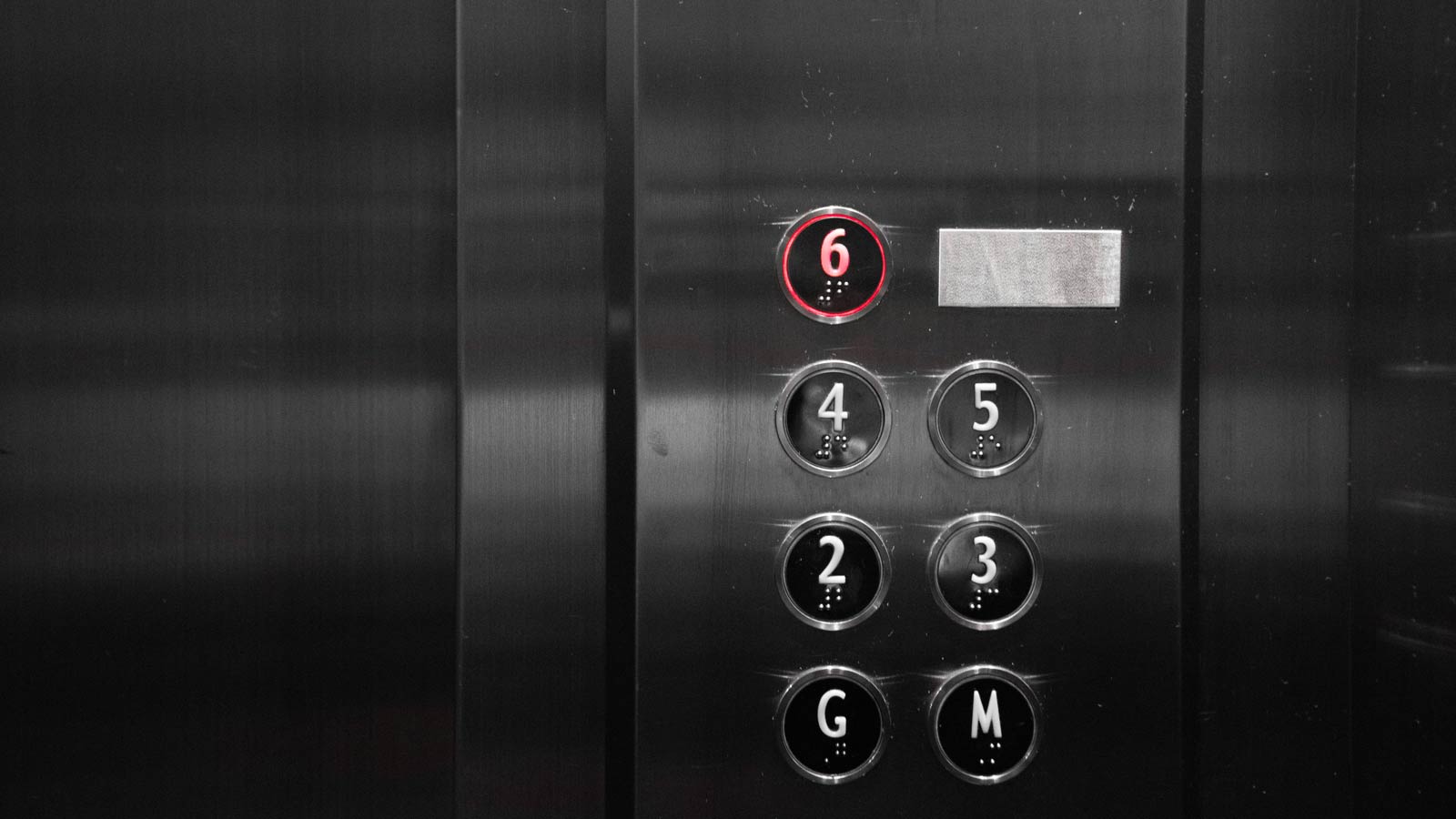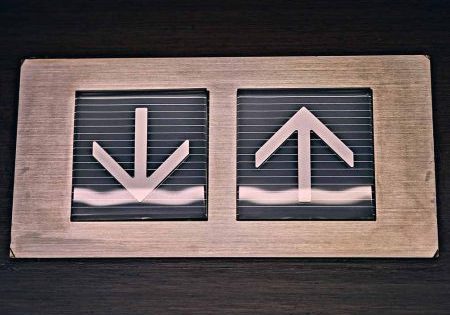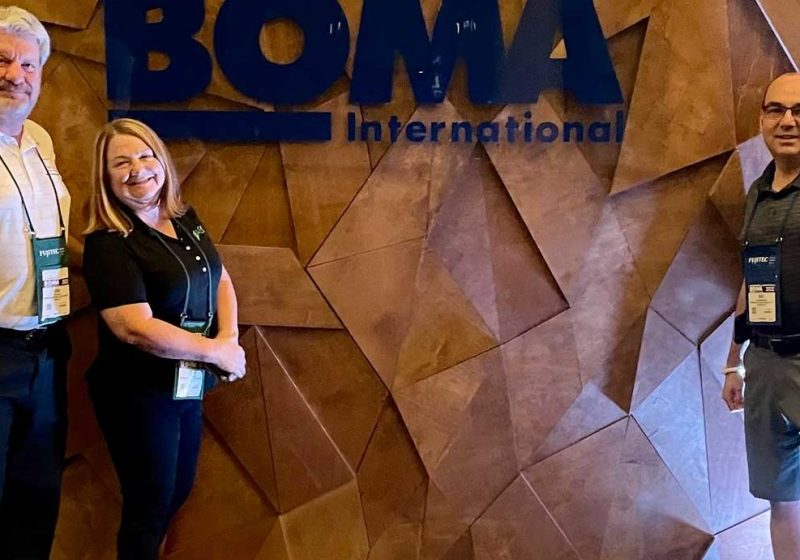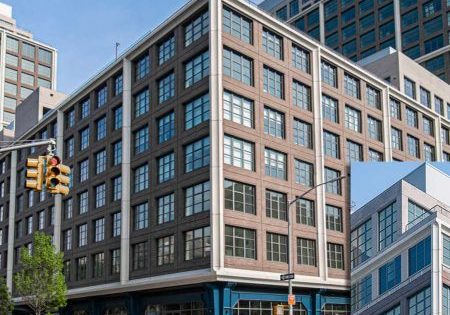A Discussion About Preventive-Maintenance Practices
Sep 1, 2022

Observations from a consultant
Since 2008, your author has investigated elevator, escalator, VRC (vertical reciprocating conveyor), A10.4 personnel hoist, and even home-built elevator injury incidents, observing the conditions and causes of injuries and fatalities. This underbelly of the industry rarely sees public light. Rarely is there any substantive publicity or published articles available to ELEVATOR WORLD readers on causes, corrections and a way forward to reduce incidents. Many reasons for this exist. Typically, settlements are secreted away by the settled parties, consultants investigating the incidents might be bound by confidentiality agreements or they simply do not write about this topic for personal reasons.
After investigating numerous incidents, an important and interesting statistic has emerged that should start a discussion about preventive-maintenance practices, which is the topic of this article. Of my body of work, only 12% of these injury incidents involved independent maintenance companies. Ten percent were residential elevator cases, leaving the bulk (78%) of injury cases where major companies had the maintenance contracts. Why? There is a very different philosophy in maintenance practices between major and independent companies. In an effort to take the lessons learned and apply them to achieve better results, this article will identify what appear to be the root causes.
Where incidents occur, my broad observations include, but are not limited to:
- Poor maintenance was performed.
- Mechanics traveled from elsewhere to attend to an issue (jobs without a resdient mechanic).
- Companies failed to perform preventive monthly maintenance.
- Low- and mid-rise buildings were primarily affected.
- Employers failed to provide ample time for mechanics to perform required tasks.
- Mechanics failed to verify completion of all maintenance tasks.
- Employers failed to provide adequate training to younger mechanics on older equipment.
In addition to maintenance issues, contracting foreign equipment without experienced mechanics, product defects, a severe lack of code knowledge by field personnel and no meaningful field supervision all contribute to the problem.
ASME A17.1-2000 Safety Code for Elevators and Escalators (Code) — and later, ASME A17.1/CSA B44 codes — include much more detailed and specific maintenance requirements than previous editions. Specifically, requirements include listing applicable components that are required to be maintained, determining the intervals between performance of maintenance tasks, providing maintenance procedures for mechanics, using trained elevator personnel and documenting when work was performed. In an unprecedented move, these Code requirements were also applied to all devices, new and existing. In the 2002 edition, the Code combined these requirements into a Maintenance Control Program (MCP). MCP requirements were published as a direct result of the significant change in maintenance practices in the industry.
In the early 1990s, the introduction of remote elevator monitoring touted it could transmit unit problems back to the major companies for resolution, creating a callback. The major companies, in turn, began not sending mechanics to perform monthly maintenance, rather, they would be sent only semi-annually or periodically. In my experience, this has come to mean as few as one visit per year. We then see increased callbacks, which are a direct performance indicator of the efficacy of preventive maintenance. The use of remote elevator monitoring and the reduction in maintenance visits allowed assigning hundreds of elevator and escalator units to a single route mechanic, rather than the typical 70 to 90 units per route mechanic. In my years as a Dover superintendent in the late 1980s, this trend was just beginning, with remote elevator monitoring becoming widespread in the 1990s and continuing today by the major companies.
In addition to maintenance issues, contracting foreign equipment without experienced mechanics, product defects, a severe lack of code knowledge by field personnel and no meaningful field supervision all contribute to the problem.
Code writers in the 1990s responded to this negative trend by rewriting the minimum maintenance requirements to mitigate the negative effects of these changes, finally publishing requirements in the 2000 edition of the Code. With the latency of jurisdictional adoption, it took until approximately 2018 for all AHJs to adopt and enforce MCP requirements.
The major companies participated in the ASME A17 Committees where these requirements were drafted, proposed, balloted, approved and published. They created their own MCPs that claim to comply with the Code. To fully comply with the Code, the intervals between tasks on applicable components to be analyzed should be determined by only knowledgeable companies and elevator personnel familiar with each unit. The applicable components consist of many systems, subsystems, components and functions that require some form of maintenance to assure compliance with the Code is maintained. The maintenance schedule is a list of tasks that typically must be performed in a year. This kind of scheduling is not a new concept. Until the mid-1980s, we knew this list as a maintenance check chart. The MCP language reflects the effort by Code writers to describe, in writing, the maintenance practices of the past. The requirements span pages 345 to 371 in the latest Code. Below is an excerpt from ASME A17.1-2019/CSA B44:19:
“ASME A17.1-2019/CSA B44:19
- 8.6.1.2.1 A written Maintenance Control Program shall be in place to maintain the equipment in compliance with the requirements of 8.6.
- (a) The Maintenance Control Program shall consist of, but not be limited to:
- (1) Examinations, maintenance and tests of equipment at scheduled intervals in order to ensure that the installation conforms to the requirements of 8.6. The maintenance procedures and intervals shall be based on:
- (a) Equipment age, condition, and accumulated wear
- (b) Design and inherent quality of the equipment
- (c) Usage
- (d) Environmental conditions
- (e) Improved technology
- (2) Cleaning, lubricating, and adjusting applicable components at regular intervals and repairing or replacing all worn or defective components where necessary to maintain the installation in compliance with the requirements of 8.6.
- (b) The instructions for locating the Maintenance Control Program shall be provided in or on the controller along with instructions on how to report any corrective action that might be necessary to the responsible party.
- (c) The maintenance records required by 8.6.1.4 shall be kept at a central location.
- (d) The Maintenance Control Program shall be accessible to the elevator personnel and shall document compliance with 8.6.
- maintenance: a process of routine examination, lubrication, cleaning, and adjustment of parts, components, and/or subsystems for the purpose of ensuring performance in accordance with the applicable Code requirements.
- (See also repair and replacement.)
- maintenance control program (MCP): a documented set of maintenance tasks, maintenance procedures, examinations, and tests to ensure that equipment is maintained in compliance with the requirements of Section 8.6.
- maintenance interval: the specified period between the occurrences of a specific maintenance task.
- maintenance procedure: an instruction or sequence of instructions for performing a specific task(s).
- maintenance task: a maintenance activity (work) that needs to be accomplished.”
The metrics when considering the frequency of intervals between performing tasks are equipment age, condition, accumulated wear, design, inherent quality, usage, environmental conditions and improved technology (see 8.6.1.2.1(a)(1)). When performing this analysis, think of the different maintenance demands of an elevator in a clean, air-conditioned building versus an elevator located in a sugar refinery exposed to a humid atmosphere. Think of a 2020 computer controller installation versus a 1981 relay logic hydraulic installation. Think of a 12-story university student residence building elevator with 2,200 starts a day or a two-story elevator in a church with 20 starts a month. The Code intended a minimum level of maintenance be performed on all the applicable components, considering that these metrics historically cause hazards when normal wear and tear deteriorate them to malfunction, particularly when the environment is detrimental. This appears to be where the MCPs with which I am familiar fail; they either do not directly identify the intervals, or they have the same intervals without considering the individual units. They are the same on all the jobs I analyze. These were the same considerations companies used for more than a century before maintenance practices changed in the late 1980s. They were just not spelled out in the Code.
In the 1980s, elevator companies competed on service, quality and performance. Designs began incorporating components that did not require maintenance. Some changes were valid: Babbitt bearing lubrication went away with the use of sealed bearings, for example. But sealed bearings designed to their maximum specification will ultimately fail depending on usage, temperature and loading. Computer controls replaced high-maintenance relay controllers, but they still have their limits. They require housekeeping, humidity and temperature controls.
“Maintenance free” became the designers’ goal, and with this change, the major companies began changing maintenance practices, assuming all “maintenance-free” components would last without maintenance. Traditionally, elevator designs lasted 20 to 50 years; today’s designs last only 10 to 15 years before requiring complete replacement. Furthermore, “maintenance-free” components do fail, just less frequently. No design changes were made to rolling or sliding components, door rollers and tracks, slides and roller guides. While improvements to some components reduced some maintenance requirements, other components still required maintenance. Yet maintenance visits were still reduced.
A full service route of 70 to 90 units per month per mechanic in every company’s route planning was typical in the early 1980s. In the late 1980s, these numbers grew to 150 to 300 units per route, which is what we see today. Some major company mechanics tell me they have up to 350 units on their routes. Major companies appear to believe remote elevator monitoring and using maintenance-free components would compensate for the reduced frequency of maintenance. However, remote elevator monitoring cannot prevent rust, debris and dirt accumulation, see water intrusion due to a leaky roof or an overflowing ice machine, blow carbon dust out of armatures and controllers, change filters in controller enclosures and many other required maintenance tasks required by Code. The list is extensive. Given more units on a route, more callbacks and scheduling more tasks than can be performed in a month, mechanics are doing little — if any — housekeeping, rustproofing, lubrication — all the tasks that make up preventive maintenance. Remote monitoring by itself is reactive, not proactive.
The use of computer controllers changed obvious common failures of relay controllers that mechanics could see to malfunctions in computer controllers that are only visible with another computer or display device. This required training and experience over time. Mechanics can understand service tools and their interfaces. The use of remote elevator monitoring is a good idea in that it could provide an early warning of impending degradation of systems, subsystems and functions. However, it does little with physical components. It may determine a new vibration that is associated with a malfunctioning physical component, then send a call to the mechanic to look at an issue. However, that allowed the failure to occur. Had the maintenance interval been monthly, perhaps the components would not have failed at all, or could have been replaced.
When used in conjunction with physically performing preventive maintenance, remote monitoring is a great idea. When remote elevator monitoring is used solely to identify malfunctions, waiting for the malfunctions to occur to take corrective actions is no longer a great idea. With little to no preventive maintenance being performed, some malfunctions can become hazardous. It becomes similar to a warning light on an automobile: It indicates something has malfunctioned, but only after the malfunction has occurred. If proper oil replacement maintenance is performed, a low oil light would rarely be necessary, short of damage to the oil pan. The MCP intends that preventive maintenance be performed to prevent the malfunction.
My experience is that major companies are now routinely scheduling maintenance in three- and six-month frequencies. In the case of the incidents I investigate, rarely are maintenance visits monthly. Additionally, while their MCPs have written procedures for reference (some more complete than others, when I analyze the records), a task that should take an hour is recorded complete in 15 min. The companies may provide a paper booklet to record completion, but 99% of the time, these written records are blank or only sporadically filled in. Most of the time, this written maintenance record is not available on-site, and when I call the number to get the record, my calls go unanswered.
Remote monitoring by itself is reactive, not proactive.
Their intervals are scheduled and assigned on smartphones, without indicating the frequency — monthly, bi-monthly, quarterly, semi-annually or annually. They are typically not visible on a chart to see the actual intervals in a full annual schedule. In the few cases they are available, rarely do they match the electronically recorded completed tasks. While some major companies say they fully expect all the tasks to be completed, others say their tasks are not mandatory. They are written only as a reference, and the performance of the task is to be determined by an overloaded mechanic who typically records what he does on his field tool or smartphone. In many cases, the recorded time is used primarily for payroll, with the maintenance records being the secondary function.
In the 1980s, as a Dover supervisor in charge of route planning and other duties, I observed that a mechanic’s route was assigned with an average of 130 to 140 h of preventive maintenance, leaving 30 to 40 h per month for callbacks, unexpected time off, vacations and unplanned repairs. This would be adjusted based on callback history. Historically, past callbacks are a good estimation of how many hours can be expected for callbacks looking forward. Certainly, things happen that cannot be planned for, but callback history information is always available. I managed the callbacks, I fed the data back to the route mechanics for their reference, I read each callback and when I had questions, I called the mechanic to clarify what was written, using the corrective actions as a syllabus for training. With 80 units, a traction route would generally have 200 callbacks a year and 17 callbacks a month, each taking 2 h on average. That equated to 34 h, and, when subtracted from 173, was 139 h for just preventive maintenance. We never scheduled 173 h of maintenance; we knew other time demands are always present.
We had an average of 1.5 callbacks per unit per year (CUY) on a hydro and 2.5 CUY on our traction elevators. Math told us the story. Total callbacks and average time reports could be reviewed every week and route loading was set based on this history. We expected all “check-chart” items to be completed. I visited all jobs through the year to verify the work was done to Dover standards. The typical industry callback average is considered 4 CUY, 6 CUY if the unit is high use such as in a hospital, college dormitory or convalescent home. This number is higher than we typically saw at Dover in the 1980s. These callbacks do not include misuse, abuse, vandalism, water intrusion, power outages and the like. It considers only callbacks due to failures of the equipment itself.
In the 1980s, all companies, major and independent, had similar monthly maintenance practices. We competed on quality, responsiveness, ability to cure sick systems and competed for elevator personnel who had the skills and talent to supplement the existing workforce. We had training classes on foreign equipment, though back then, we were 92% Dover equipment and would have preferred to stay that way. The only foreign equipment was generally forced on us by our customers who wanted to have one elevator contract. We knew Dover equipment, and our mechanics would be the most efficient in all aspects of Dover maintenance. But as real estate companies grew their portfolios, foreign equipment crept into our inventory, forcing us and other companies to take on foreign equipment. To provide the same high quality, we needed foreign equipment expert mechanics to train our mechanics, and then train them how to maintain Dover equipment. At least two major companies then created a company division to write maintenance manuals for foreign equipment, making these available to branches for distribution and training. Most independent companies use this same route planning method, each with a slight variation of their own, but monthly maintenance is the rule.
The major companies took a drastic and different direction; they schedule 173 hours (2,080 hours per year divided by 12 months) of maintenance per month (on average), filling every hours of a route mechanic’s time with maintenance tasks. Claims that all the maintenance tasks are expected to be done are either a fantasy or a falsehood. In reality, route mechanics are not completing all maintenance tasks, and their work records show this where incidents have occurred. Months go by with no site visits. Then, to add insult, many major companies charge extra to repair degraded components that are typically covered components in the maintenance contract.
Unwitting and unsuspecting customers pay the bills the majority of the time. Some question discrepancies, but most do not. This practice of overscheduling work to a route mechanic needs to be addressed based on injury incidents I noted above. It is my opinion this directly contributes to equipment failures and their particular hazards.
I don’t fault any company for trying to upsell a beneficial feature or service. However, it is disappointing that, when a door gib is bent, resulting in the door skin rubbing the return and eventually ruining the door skin, it becomes a billable callback. This is despite the company not being there for five months and when they finally show, they propose a US$10,000 door reskinning — all because, for example, they failed to repair a bent gib, required by Code requirement 8.6.4.13.1, during a monthly maintenance visit.
Customers are frustrated. Some are astute enough to know this is a degraded condition, but the company not visiting the unit for five months was not their fault. They had a maintenance contract, and this should have been repaired under preventive maintenance before collateral damage occurred! In this example, the customer saw it early on and called for maintenance to correct it, but maintenance never came. When the customer continued to complain, the next company contact was the salesperson with a proposal to replace the door skin.
Overscheduling maintenance has been called many things. At Dover in 1987, it was known as “super routes,” the practice of splitting three routes into two, going from three route mechanics to two mechanics. Essentially adding 40 to 50 units to a mechanic with 70 to 90 units, removing all callback time from his route so that when the mechanic takes a callback on his new larger route, they are not doing maintenance, as their time is spent taking callbacks on the higher number of units. This snowballs until many more tasks go undone, causing even more callbacks. Housekeeping is generally the first task to go.
Housekeeping is the single most important maintenance task there is. Clean equipment runs much better than dirty equipment. As the increased callbacks back up in a queue, component degradation continues and the route mechanics become demoralized because they can’t do what they know needs to be done given the time constraints.
They are always in an apologetic posture, accepting the verbal abuse of the customer, but not wanting to throw the company under the bus or worse, get fired. This practice is juxtaposed against the publicly available National Elevator Industry, Inc. (NEII) Maintenance Guidelines that NEII publishes and customers can download here. The guidelines include:
- “NEII-1
- PART 7 MAINTENANCE GUIDELINES
- MAINTENANCE GUIDELINES
- 1.0 INTRODUCTION:
- A clean job facilitates maintenance. However, very clean or polished equipment may not be the best maintained. A measure of the quality of maintenance is the frequency of equipment-related callbacks considering usage and environment. Evaluation of maintenance quality is largely subjective with regard to cleanliness and lubrication. Appropriate adjustment or operation of the equipment can be evaluated based on the original design performance standard for older equipment or the NEII® Performance Standards for relatively new equipment. The applicable code(s) should be used to recommend correction of sub-standard conditions. ASME A17.1/CSA B44, Section 8.6 and ASME A17.7/CSA B44.7, Section 2.12.3, where applicable, includes maintenance requirements that must be considered. Current code requirements can be used as a reference for product enhancement. A ‘Maintenance Performance Evaluation Form’ and ‘Maintenance Evaluation Checklist’ are provided.”
All MCPs have housekeeping tasks, but in the population of injury incidents, the equipment is not clean and evidence of the use of a broom or a vacuum cleaner is non-existent. Annual hoistway cleandowns were a rule and usually the start of an apprentice’s career in the maintenance or service departments.
While one company sector writes the Code requirements and the NEII-1 guidelines, the maintenance departments ignore it. It is left to chance whether the degradation will allow a critical component to malfunction. It could be destruction of a gib wearing away or carbon dust buildup on electronic printed circuit boards. Such buildup could cause the software to output errant voltages or create input errors that could result in untoward actions, including closing doors without reopening devices, running the elevator unexpectedly or suddenly stopping it. Housekeeping is essential and is generally the first task ignored. This must change, and inspectors should consider all horizontal surfaces non-compliant if they are not broom swept clean, or any hoistway components with accumulated lint evident to the eye, any sill with any debris at all and carbon dust buildup inside a controller.
What is also worth noting is that the major companies still get the monthly payments typically budgeted by all companies, the money provides a 30-40% maintenance profit. But it is 100% profit if there are no mechanic visits and labor expenses charged to that account. When I am critical of major companies, I am told I just don’t know how hard it is to compete with the independent companies; that they have to shed labor costs because they can’t possibly raise contract prices. In my travels, the independent companies are paid near par of what the major companies are for maintenance. The majors want more profit to offset their greater corporate costs — costs that independent companies don’t have. The higher corporate costs and reduced labor costs should not override the contractual duties to perform preventive maintenance tasks at scheduled intervals, thereby sacrificing safety.
In my experience, overscheduling invites incomplete maintenance, which results in injuries and fatalities. For example, when key door maintenance tasks are not performed, the door components do not even get visually examined, parts loosen, vibrate off and allow persons to fall into the hoistway. This should never happen! How does a major company justify this? “The inspector should have found it” is not a valid excuse. The customer/owner reasonably assumes all maintenance tasks they are paying for are being done, inspectors look at the MCPs and expect the companies to actually have done the tasks the Code requires them to do. They don’t inspect every item on a periodic inspection; they look for the obvious things and expect the company has done their job.
Inspectors are also there only once or twice a year, and it is poor planning if you expect them to catch all the maintenance the company is not performing. Maintenance records are typically not available to even review. The major companies say they expect all their tasks to have been done, either by their MCP design or through the mechanic making a judgment about what tasks need to be done. However, the fact is, the Code requires the unit’s applicable components to be compliant by shortening the intervals as necessary and verifying the tasks are actually performed. This is the role of the maintenance company. It is not the role of the inspector to check if every maintenance task was performed. If a company relies on an inspector to supervise the work of company employees, this is way outside the usual and customary norms of the industry. Inspectors are not maintenance supervisors.
Overscheduling maintenance practices invites excuses for poor performance, such as, “Well, it should have been done.” “We didn’t knowingly allow an unsafe condition.” “When we came to know of a Code violation, we corrected it.” When they become aware, after an injury or fatality, and the investigation uncovers no door tasks were done, it turns “preventive maintenance” on its head! Their practice did not “prevent” degradation or malfunction at all. By all appearances, it appears they expect that, occasionally, maintenance will be missed, but gamble that this will not likely result in injury. Sadly, with all the monthly payments without labor expenses, it appears they can budget for settlements and still be profitable.
Creating a callback system that obfuscates information is a deliberate decision by the callback reporting system developers.
Tasks are mandatory, according to Code. Discovering that tasks are not being performed is a management issue. Good and accepted industry practice is to have reporting systems that provide notice of incomplete tasks to the maintenance company so that missing maintenance can be managed and tasks completed. Route sizing must be reasonable to provide mechanics ample time to complete all tasks. This used to be a visible check chart that a supervisor — or even a building owner — could view and see when the applicable components were maintained. Any electronic system of recording maintenance completion should have the same visibility. In my experience, none of the major company systems have this information available for easy review.
Correcting any problem first needs identification of the problem. Best practices identified to improve results must be implemented. Writing articles, compiling incident reports and testifying in injury matters on these specific problems should be enough indication that overscheduling is causal to injury incidents. In my experience, after 13 years, it has not changed major companies’ practices. It is easy to say the “bean counters” are driving this trend and nothing can be done. However, this is not true. Rider safety must also be a priority. Its voice should be as loud in the boardroom as that of financial results. Without this, overscheduling maintenance practices will not change. It is a choice. Public safety must be paramount. Hopefully, this article can motivate this change. Perhaps company leaders will create an agenda item where rider safety priorities will be considered and changes made to the practice of maintenance overscheduling.
Adherence to NEII industry standards and the letter of the Code, written by the major companies, should be the minimum when maintenance is contracted. The writers of the NEII-1 document and the writers of the Code have done their job. Where things fall apart are in practicing these guidelines and complying at the branch level, primarily in the low- and mid-rise equipment sectors. These units lack jobsite visitation and maintenance tasks are not fully complete. Transparency is lacking. The means to verify completeness should be the informational goal of any MCP. Payroll information can be gleaned from the use of smartphones, but the primary focus should be to ensure mechanics complete every task to achieve the highest level of safety.
Besides overscheduling maintenance issues, callback documentation is also not Code compliant. Callback details should be more than a drop-down list of uninformative selections without any specific written details. “Troubleshoot Controller, RTS” is not Code compliant. The controller has hundreds of items. Which item failed and what was done to correct it? “Replaced relay” is not Code compliant. Which relay was replaced? Creating a callback system that obfuscates information is a deliberate decision by the callback reporting system developers. Callback reports should include a full description of the findings and corrective actions, descriptive enough that the next mechanic will benefit from the last callback report. Not allowing a full informational transfer in the system creates hazards that will increase the odds of an incident later due to the same original problem. The next mechanic doesn’t find the real problem simply because he wasn’t tipped off by a previous written corrective action. The Code does not permit “Troubleshoot” to be a corrective action; it is an action, but not a corrective action.
- “ASME A17.1-2019/CSA B44:19
- 8.6.1.4 Maintenance Records. Maintenance records shall document compliance with Section 8.6. Instructions for locating the maintenance records of each unit, for viewing on-site, shall be posted on the controller or at the means necessary for test (see 2.7.6.4). The provided instructions shall be permanently legible with characters a minimum of 3 mm (0.125 in.) in height. These records shall be retained for the most recent 5 yr or from the date of installation or adoption of this Code edition, whichever is less or as specified by the AHJ. Existing maintenance records up to 5 yr shall be retained.
- “8.6.1.4.2 Callbacks (Trouble Calls). A record of callbacks shall be maintained and shall include the description of reported trouble, dates, time, and corrective action(s) taken that are reported by any means to elevator personnel. These records shall be made available to elevator personnel when performing corrective action. For elevator personnel other than personnel performing the corrective action, records will be available upon request. Instructions on how to report any need for corrective action (trouble calls) to the responsible party shall be posted on the controller or at the means necessary for test (see 2.7.6.4). The instructions shall be permanently legible with characters a minimum of 3 mm (0.125 in.) in height.”
Reviewing callback records for the purpose of labor management and providing feedback to the mechanics should be a mandatory role of supervisors. In the case of incidents that result in a lawsuit, having vague and uninformative corrective descriptions is always viewed negatively when compared with the Code requirement that the callback record “shall include the description of reported trouble, dates, time and corrective action(s) taken that are reported by any means to elevator personnel.” After years of writing similar opinions and criticisms, these documentation practices have not changed. Lack of description leads to overlooked malfunctions. This allows hazards to persist when a unit is in service.
There is a cost for safety. Customers know this and, given a choice to spend more, will be favorably received when all the evidence is provided. This article speaks to two different maintenance practices: monthly maintenance versus periodic maintenance. The disparity in the number of injury incidents tells a specific tale of the outcomes of these two different practices. 12% versus 78%, and I am just one consultant. I estimate major companies maintain 60% of the total inventory, so the split of injury incidents should be 40% versus 60% just looking at the percentage of units maintained. In speaking to other consultants, they report similar findings.
Elevators are ubiquitous in modern society. We tout a statistically minimal number of incidents. However, given my experience, many, if not all, incidents would also not have occurred had safer maintenance practices been performed. Given the billions of elevator and escalator rides in a day, fatal incidents speak to a loss of something when we can get it correct so many times. It is negligence when we don’t.
For owners, selecting maintenance contractors typically includes factors such as elevator company size, depth of technological expertise, parts availability, qualification of maintenance mechanics, compliance with industry standards and cost. I suggest adding factors, including compliance with MCP Code requirements, callback rates in similar-sized and types of installations and monthly maintenance. If these factors are compared after a fatality or other injury and after the negative perception it leaves the building owner, many owners will opt for monthly maintenance where the equipment is kept in Code compliance, in my experience.
Preventive maintenance should be done monthly. The presence of a mechanic who can listen to, visually examine and verify components, functions, systems and subsystems for proper operation continues to be the practice that reduces hazards and incidents by the evidence presented in this article. Remote elevator monitoring is not a substitute for preventive maintenance: It cannot clean, lubricate or prevent any issues. Its reason for being is to simply announce malfunctions! In my experience, ofttimes this is after the injury or fatality has occurred. It is a useful tool that needs to be a supplement to preventive maintenance, not a replacement of preventive maintenance. Overscheduling maintenance must be eliminated. Perhaps Code writers could limit the units on routes outright, instead of writing procedures that should have led to this limit and better yet, require monthly maintenance.
This article reflects the views of the author and not necessarily that of this publication.
Get more of Elevator World. Sign up for our free e-newsletter.









